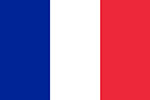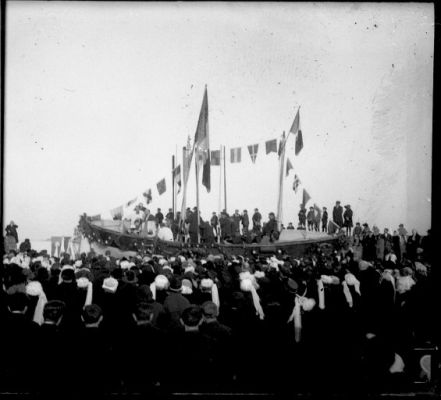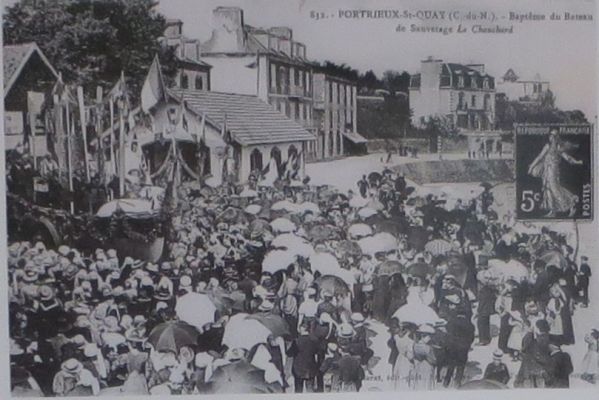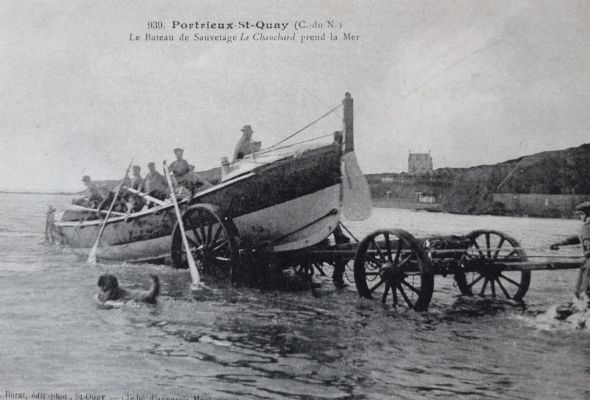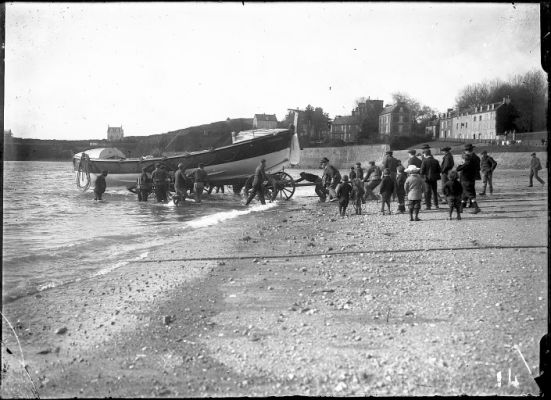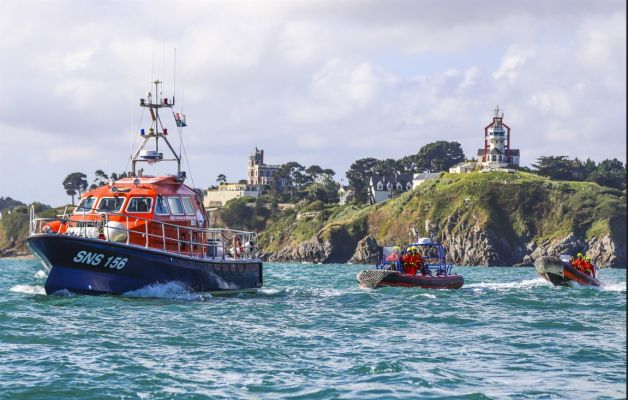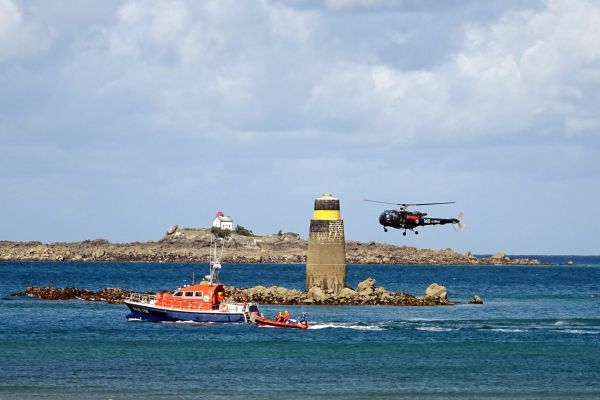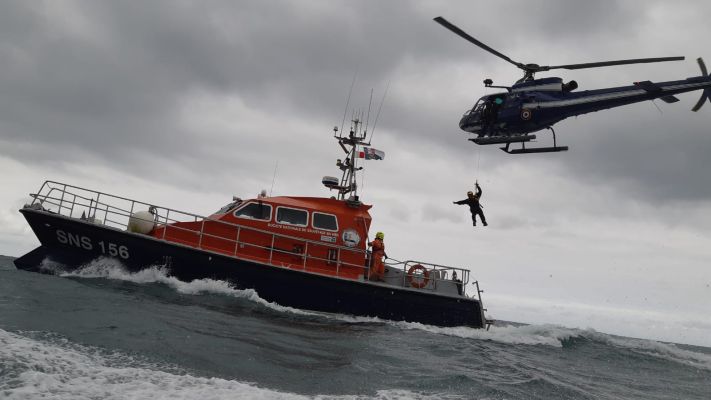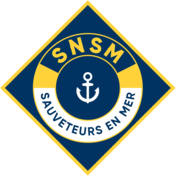Coastal rescue
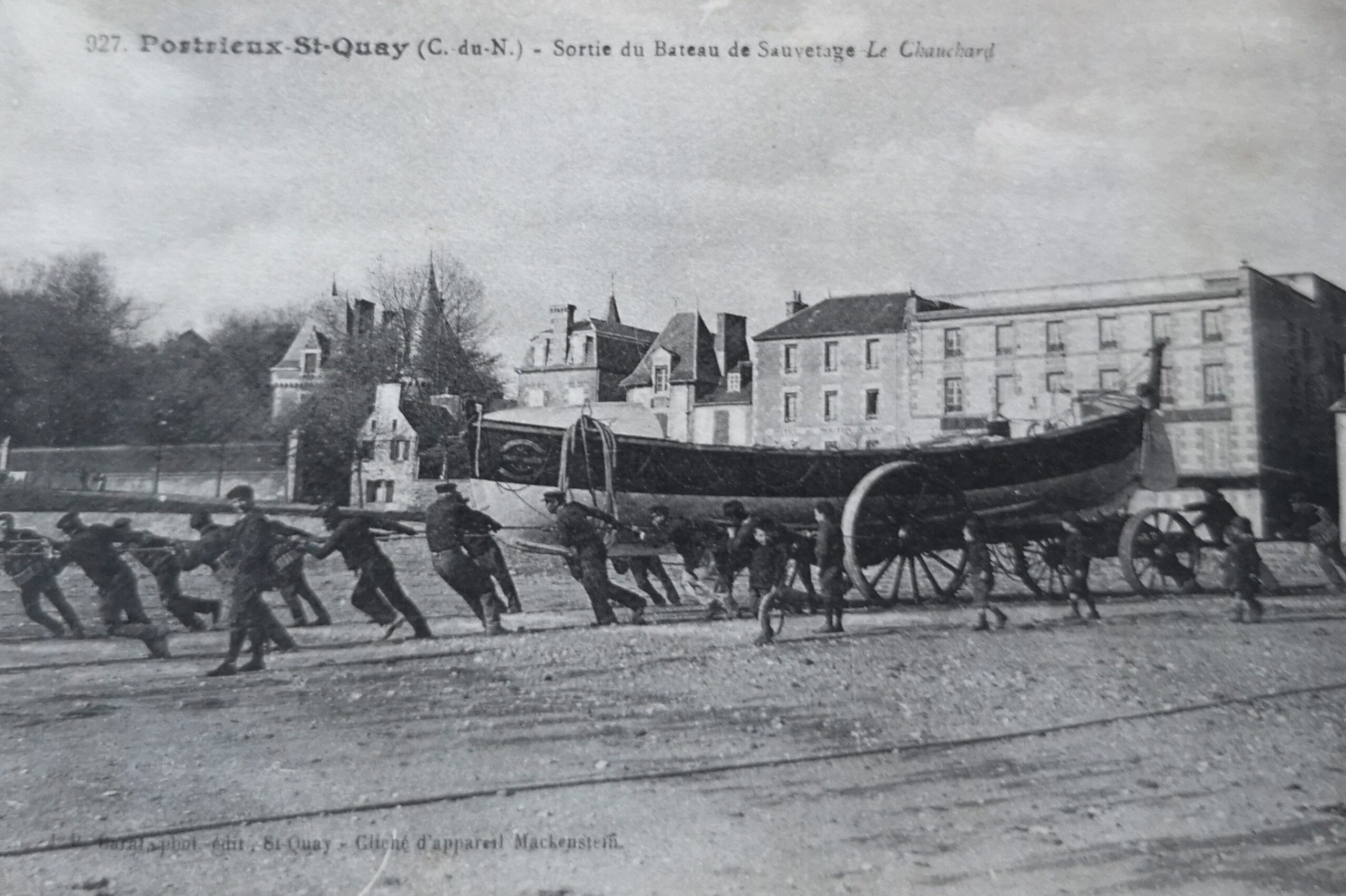
From the Société Centrale de Secours aux Naufragés (SCSN) to the Société Nationale de Sauvetage en Mer (SNSM)
Until the second half of the 19th century, maritime buoyage was in its infancy. Lighthouses, turrets and buoys were only gradually installed from 1850 onwards (see the “Harbour Island and the Comtesse” sign). Shipwrecks and drownings were frequent. One report from these years recorded a shipwreck every 20 hours, and losses of 1,400 men a year. Apart from a few local initiatives, nothing existed to rescue sailors in difficulty.
The Société Centrale de Sauvetage des Naufragés was created in 1866, at the instigation of Napoleon III, who wanted to set up a centralized private sea rescue service. It was funded by donations and bequests, and staffed by volunteer sailors. This is still the case today.
Saint-Quay-Portrieux was one of the first stations created by the fledgling SCSN, chosen as “the most favorable port in the Bay of Saint Brieuc for launching a boat into the sea in heavy weather”. Even today, its location is strategic, thanks to the deep-water port, which enables the crew to set sail easily at any time, and facilitates medical evacuations.
It operated under the SCSN colors until after the Second World War, with rowing and sailing lifeboats operated by heroic volunteer sailors.The first lifeboat was launched in 1867.The Hospitaliers Sauveteurs Bretons (HSB) then took over, until they merged with the Société Nationale de Sauvetage en Mer (SNSM) in 1967.
Since 1970, the SNSM has been an association recognized as being in the public interest.It has over 200 stations along the French and overseas coastlines, and provides assistance and rescue services, generally up to 20 miles from the coast (around 38km).
The Saint-Quay-Portrieux SNSM station today
The Saint-Quay-Portrieux SNSM station is a permanent one, with premises in the Port d’Armor. It acts, on call from the semaphore, under the orders of Cross Corsen (the regional operational surveillance and rescue center for the Mont-Saint-Michel – Pointe de Penmarc’h area) and in coordination with the Erquy and Loguivy stations. It is potentially involved with around 100 professional fishermen and 4,000 pleasure boats, not to mention all the small dinghies and beach craft. Its theoretical zone of action is delimited by the Ost Pic at the entrance to Paimpol cove, the Grand Léjon lighthouse offshore and the Pointe de Guettes at Hillion, to the south.
Its equipment includes :
The first-class launch Sainte Anne du Port or SNS 156, commissioned in 2007.
The semi-rigid Raphaël, for operations close to the coast and in rocky areas such as the Saint Quay islands.
The participation of the civil protection helicopter when necessary.
Its human resources consist of a team of 46 extremely competent and dedicated volunteers, 35 of whom are on board. An on-call system ensures that a team of 6 people is always ready to set sail within 20 minutes. They accept training and regular medical check-ups.
When a lookout from the semaphore spots a vessel in difficulty, or when the vessel itself sends out a distress call on VHF channel 16 (“mayday” if lives are at stake, or “panpan” if the vessel’s safety is threatened), the CROSS is alerted and initiates and coordinates all rescue operations. The semaphore notifies the SNSM.
At sea, the rescue of any person in distress is free of charge, but assistance to the vessel is optional and may give rise to payment of a fee to the helper.
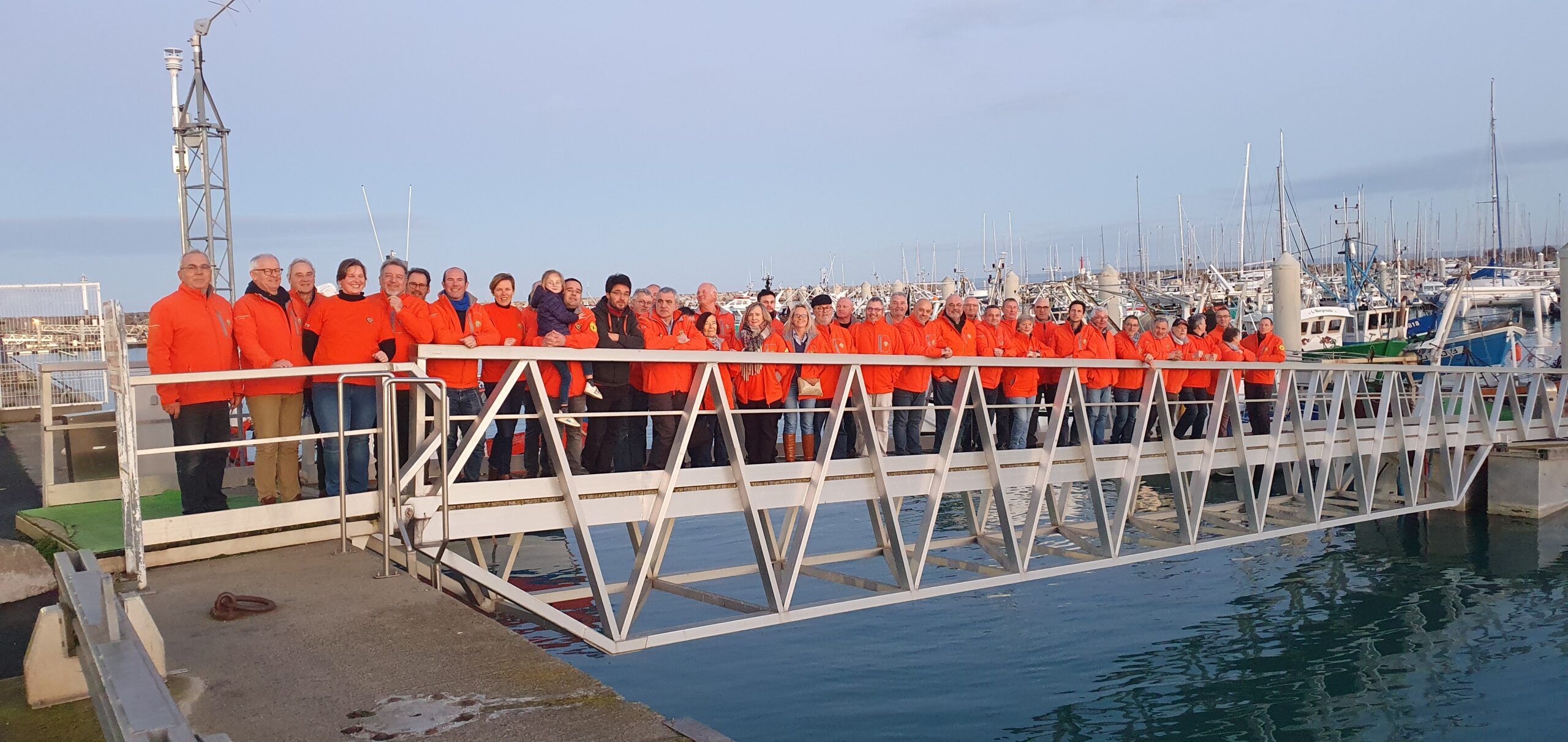
La station SNSM aujourd’hui – Equipe des sauveteurs bénévoles.
While saving lives at sea is essential, the SNSM’s public service and civil protection missions are equally important. In Saint-Quay-Portrieux, its regular activities include helping to ensure safety during scallop fishing and nautical events, scattering ashes, risk prevention demonstrations and a dozen school visits each year.
But without funding, nothing is possible! Like the SNSM as a whole, funding for the Saint-Quay-Portrieux station relies essentially on private donations. So, let’s not forget the slogan: “Human life has no price, but rescue has a cost!”
Please support them: www.snsm.org
Récit de sauvetage à Saint-Quay-Portrieux
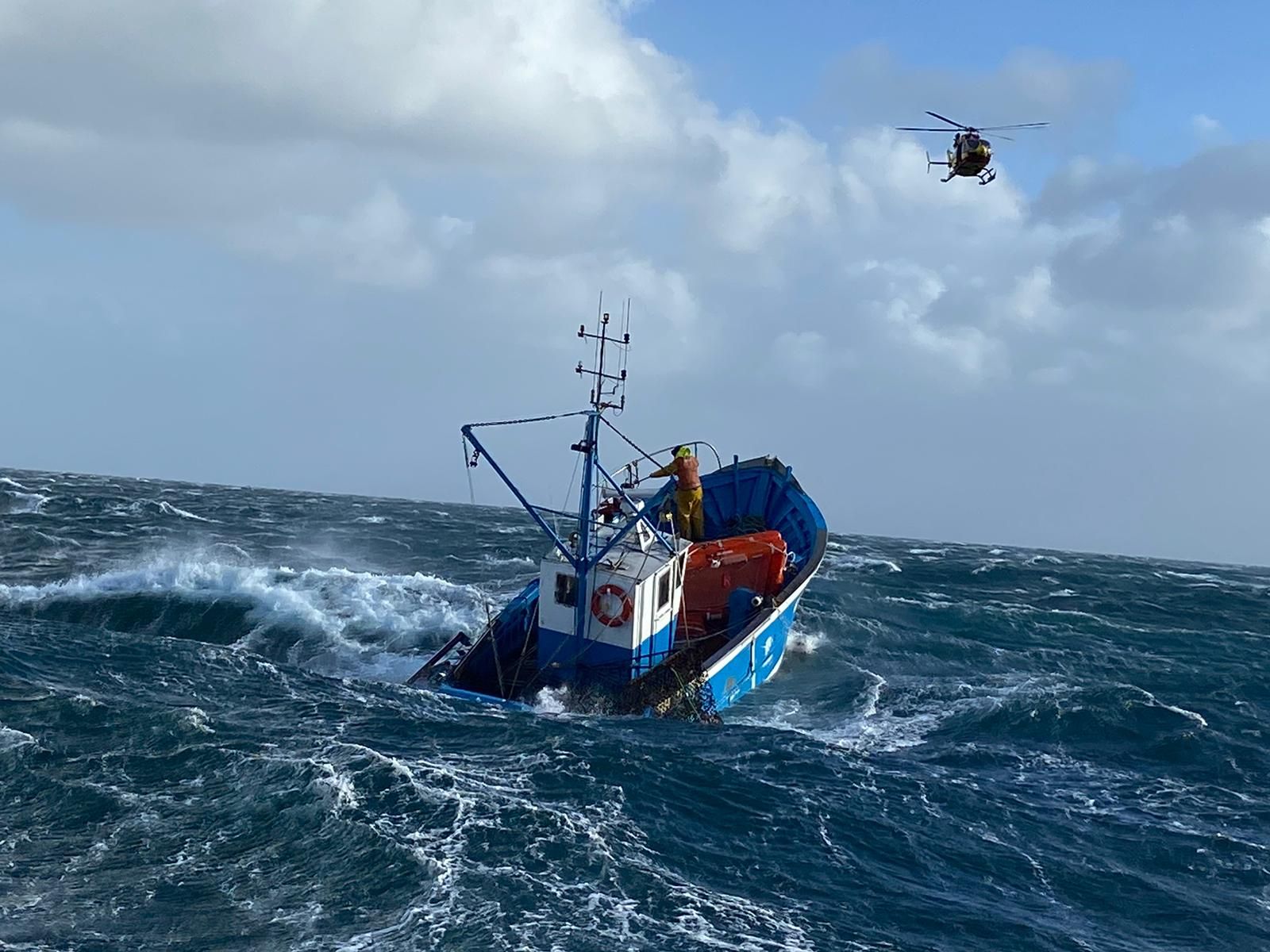
Account of one of the SNSM’s last tough interventions in 2023:
“A trawler had tangled the dredger’s funnels in the propeller. There was a 3-meter swell, they had no survival suits, and it was impossible to board or tell them to jump into the water. Lives are the priority. The sailors’ and ours. We don’t take unnecessary risks for the boat. We sent photos and videos to the CROSS for them to decide, and after 30 minutes the CROSS sent a chopper from Granville. Two of them were airlifted out. The boat remained attached to its dredger. The next day the sea was calmer, so we were able to go and search for the vessel.”
